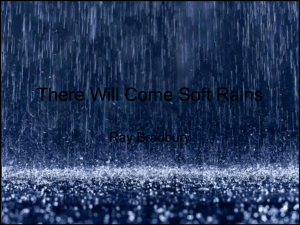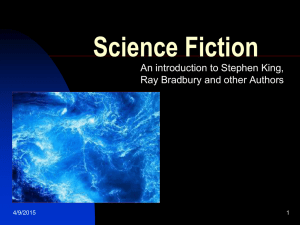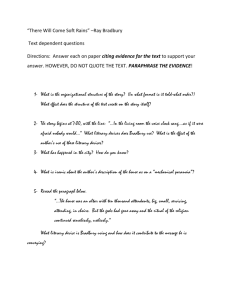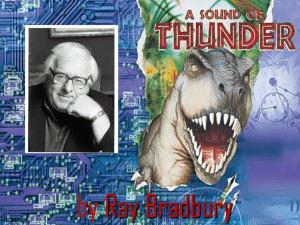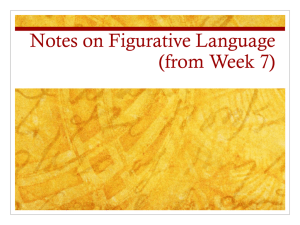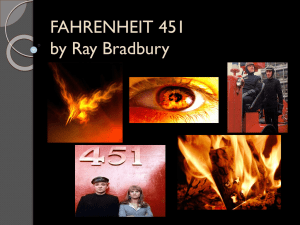Analysis. Something Wicked This Way Comes is a suspenseful and
advertisement
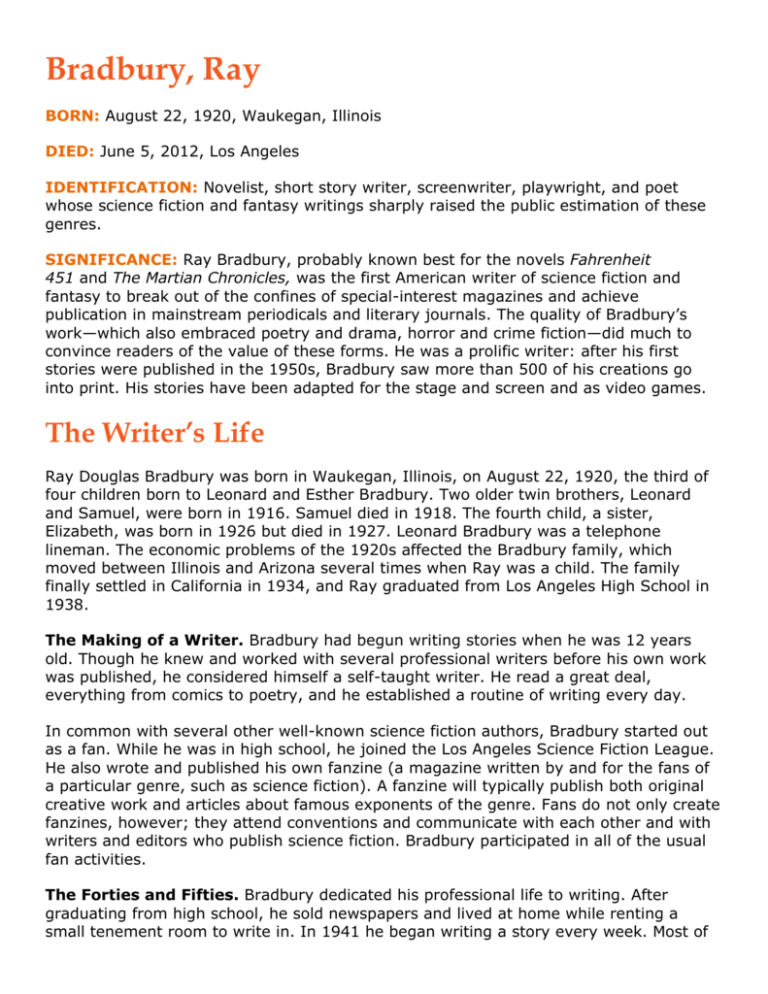
Bradbury, Ray BORN: August 22, 1920, Waukegan, Illinois DIED: June 5, 2012, Los Angeles IDENTIFICATION: Novelist, short story writer, screenwriter, playwright, and poet whose science fiction and fantasy writings sharply raised the public estimation of these genres. SIGNIFICANCE: Ray Bradbury, probably known best for the novels Fahrenheit 451 and The Martian Chronicles, was the first American writer of science fiction and fantasy to break out of the confines of special-interest magazines and achieve publication in mainstream periodicals and literary journals. The quality of Bradbury’s work—which also embraced poetry and drama, horror and crime fiction—did much to convince readers of the value of these forms. He was a prolific writer: after his first stories were published in the 1950s, Bradbury saw more than 500 of his creations go into print. His stories have been adapted for the stage and screen and as video games. The Writer’s Life Ray Douglas Bradbury was born in Waukegan, Illinois, on August 22, 1920, the third of four children born to Leonard and Esther Bradbury. Two older twin brothers, Leonard and Samuel, were born in 1916. Samuel died in 1918. The fourth child, a sister, Elizabeth, was born in 1926 but died in 1927. Leonard Bradbury was a telephone lineman. The economic problems of the 1920s affected the Bradbury family, which moved between Illinois and Arizona several times when Ray was a child. The family finally settled in California in 1934, and Ray graduated from Los Angeles High School in 1938. The Making of a Writer. Bradbury had begun writing stories when he was 12 years old. Though he knew and worked with several professional writers before his own work was published, he considered himself a self-taught writer. He read a great deal, everything from comics to poetry, and he established a routine of writing every day. In common with several other well-known science fiction authors, Bradbury started out as a fan. While he was in high school, he joined the Los Angeles Science Fiction League. He also wrote and published his own fanzine (a magazine written by and for the fans of a particular genre, such as science fiction). A fanzine will typically publish both original creative work and articles about famous exponents of the genre. Fans do not only create fanzines, however; they attend conventions and communicate with each other and with writers and editors who publish science fiction. Bradbury participated in all of the usual fan activities. The Forties and Fifties. Bradbury dedicated his professional life to writing. After graduating from high school, he sold newspapers and lived at home while renting a small tenement room to write in. In 1941 he began writing a story every week. Most of his earlier stories were not published, and he said that he burned many of his bad early stories before he got married. (In 1946 Bradbury met Marguerite Susan McClure in a bookstore. They married in 1947 and had four daughters between 1949 and 1958. Marguerite died in 2003.) Bradbury frequently said that writers learn to write by writing regularly. He sold one or two stories in 1941 and 1942. By 1943 he had resigned from the newspaper to write full time. His earlier stories were primarily published in fantasy and horror magazines, such as Weird Tales. By the end of the forties, he was married, had won recognition for his work in science fiction and fantasy, and had begun to be published in mainstream literary magazines, magazines that did not as a rule publish science fiction or fantasy stories. During the fifties were published what have become known as Bradbury’s most important books: The Martian Chronicles, Fahrenheit 451, and Dandelion Wine, as well as several major collections of short stories (he also wrote screenplays during this period). With these works he moved from being known merely as a science fiction and fantasy writer to being recognized and praised by literary critics, people who tended to ignore or scorn those who wrote in these genres. The Sixties and Beyond. Bradbury wrote most of his fantastic fiction in the first two decades of his career. His later fiction tended more toward mystery or suspense. In the sixties he began writing and publishing more poetry and drama, including stage plays, adaptations of his stories, and television scripts. He also wrote nonfiction on a wide variety of subjects. A Life of Writing. Interest in Bradbury’s life tends to focus mostly on his writing. However, Bradbury was also publicly involved in other work related to his passions, such as designing for and consulting with Walt Disney’s company and even the National Aeronautics and Space Administration (NASA) on creative and entertainment projects. One important aspect of Bradbury’s life since childhood was his passion for various popular enthusiasms: dinosaurs, stage magic and illusion, carnivals, space travel, Mars, and movies and comics, especially science fiction or fantastic movies and comics. His fascination with some of these activities and ideas is evident in the fact that he wrote about different facets of them for more than 50 years. Permission: AP Photo Ray Bradbury stands behind his desk in 1986. Robots and rocket ships battle for space with Mickey Mouse and much else. The clutter of toys was no accident: over his decades of writing, Bradbury drew on a nonstop sense of wonder inherited from boyhood. The writer poured out stories about joy and terror, many of them taking shape as tales of the supernatural or his own rapturous variant of science fiction. "In quickness is truth," he advised writers. "The faster you blurt, the more swiftly you write, the more honest you are. In hesitation is thought. In delay comes the effort for a style, instead of leaping upon truth which is the only style worth deadfalling or tiger-trapping." Writing about Time and Place. The love Bradbury felt for his birthplace of Waukegan is shown in his creation of the fictional Green Town, the setting of Dandelion Wine and Something Wicked This Way Comes, as well as other small towns in his short stories. In the small towns Bradbury described, families gather on the porch and talk to neighbors of an evening; people walk or perhaps ride a trolley to work and know everyone who lives nearby. Although his towns are small, the people, houses, and events described are often larger than life—and hence not at all an "accurate" portrayal of what Waukegan was like when Bradbury and his family lived there. Bradbury’s small towns are part of a mythic version of an idealized American past, whether the town is in the Midwest or on Mars. The love Bradbury felt for Los Angeles, the city he moved to when he was 14 and in which he became an adult, met his wife, and raised his family, is connected to his love for the popular culture that the United States has become so well known for and to his vision of Los Angeles as a city of the future. Bradbury’s experience working in film— along with much other screenwriting, he wrote the screenplay for It Came from Outer Space and adapted Moby Dick for John Huston’s film of Melville’s novel—was put to good use in his later novels A Graveyard for Lunatics and Green Shadows, White Whale. SOMETHING WICKED THIS WAY COMES Genre: Novel Subgenre: Gothic fiction Published: New York, 1962 Time period: A late October in the 1920s Setting: Green Town, Illinois (fictional town loosely based on Waukegan, Illinois) Themes and Issues. Something Wicked This Way Comes is a book set in the autumn at Halloween time, a setting appropriate to the gothic genre. Gothic novels show an ordinary world invaded by evil forces. This novel is often seen as a sequel of sorts to Dandelion Wine and is even set in the same town. Its concern is adolescent boys coming of age and dealing with the onset of sexual awakening and with the nature of good and evil in their world. The Plot. The novel opens with the two main characters, Will Halloway and Jim Nightshade, both 13 years old, enjoying October and the prospect of Halloween. They meet a lightning rod salesman, Tom Fury, who offers them a free lighting rod and warns them that a storm is coming. As the boys and Will’s father, Charles, go home that evening, they see posters for a carnival that will be coming to town that weekend, Cooger & Dark’s Pandemonium Shadow Show. When the carnival comes, however, strange things begin to happen. The disappearance of Tom Fury is hardly noticed since he is a traveling salesman. However, Miss Foley, Jim and Will’s teacher, has an unsettling experience when she visits the carnival, and later Will and Jim find Tom Fury’s bag of lighting rods abandoned on the ground at the carnival. When the two boys investigate the carnival grounds that night, they see the owners running the merry-go-round. The ride seems to turn one of them into a boy. The adult owner, Mr. Dark, tries different ways of capturing the two boys. The attempts become increasingly frightening and supernatural, and all seem to have something to do with time. The owners promise the young a fast and easy way to grow up to enjoy adulthood and older people a return to their carefree youth. In all cases the promises are lies. The final confrontation of the novel comes when Charles, Will, and Jim go back to the carnival and face their opponents. Only through their love and laughter are Charles and Will able to save Jim. The novel ends with the freeing of the carnival people, who were actually prisoners; Dark and Cooger are destroyed along with the merry-go-round, and the father and two boys return home to their respective families. Analysis. Something Wicked This Way Comes is a suspenseful and thrilling novel. Instead of being a nostalgic story about a carnival coming to a small Midwestern town, the novel focuses on a conflict between good and evil. Good in the novel is represented by ordinary people who love their families and towns. Evil is represented by a sinister carnival owned by two supernatural beings who capture and deform others. The carnival people do not or cannot love. Only love and laughter can protect the main characters, Jim Nightshade, Will Halloway, and Charles Halloway (Will’s father). The main focus of the novel is on the relationship between a growing boy and his father, who are separated at the beginning by a sense that youth and age are not able to communicate. Only when they come together can they defeat the evil forces that threaten their friends and family.
